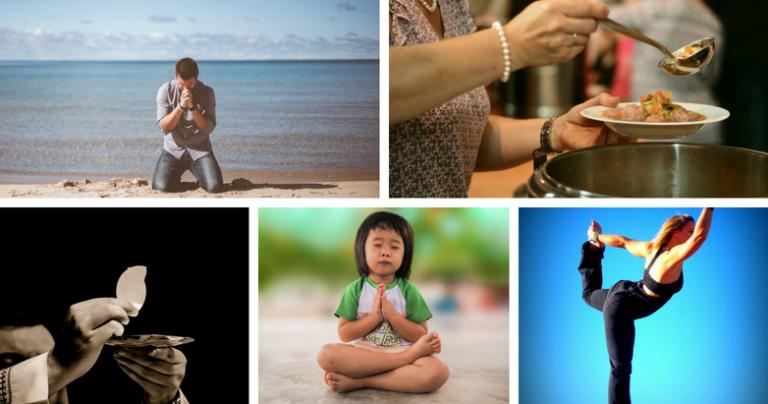
In my book, Experifaith: At the Heart of Every Religion, I make the case—based on the writings of titans such as Huston Smith and William James—that experience is at the heart of every religion.
However—as James so poignantly illustrated in his writings—when spiritual experiences calcify and become dogma or Holy Scripture, they often lose contact with the very source from which they drew their own inspiration and leave believers with a second-hand religion of rituals, doctrines, and institutions.
What if we could all reconnect to the source of the inspiration that blazed the path in the first place? What if every religion and spiritual path offered ways in which to do exactly that?
If that sounds appealing to you, you’re in luck, because they do.
Your Menu
Here is a concentrated list of all the experiential or firsthand paths and practices that you can find cross-culturally in most, if not all, of the wisdom traditions. You don’t need to do everything on this menu. In fact, based on personality and appeal, everyone should be able to find something that fits his or her preferred spiritual approach.
The Path of Goodness
This is the most common of all spiritual paths and serves as the foundation for most moral codes and religions. Those who practice this path appeal to our better natures and want us to nurture the seeds of compassion, kindness, generosity, empathy, and altruism.
The Path of Oneness
This is an internally oriented path that is usually reserved for mystics in each tradition. It is practiced by people who long for peace of mind, calm, and detachment from the worries of the world, in short, those who long to unveil the ever-present essence and merge with infinity.
Experimental Practices
Every religion and spiritual path offers practices that have been time-tested and can be replicated. The purpose of these practices is to open a door between the human and divine. The most common ones are prayer, meditation, communal worship, conscious movements, such as yoga and tai chi, and rituals.
I chose the word ‘experimental’ to describe them—based on the writings of Huston Smith—because even though they are time-tested, each person must experiment with them and achieve firsthand outcomes. Reading about them or hearing about them will not be enough. Only direct experience will suffice.
Contemplative Practices
Contemplation revolves around deep thinking. In the realm of religion and spirituality, topics include the nature of the world, spirit, God, man, the cosmos, and more. This time-honored and universal tradition is reserved for those who are intellectually inclined. It is engaged in through reading, writing, dialogue, and alone time.
Same as with the other experiential elements, contemplation cannot be done for anyone. Those who are so inclined must come to their own conclusions, even if they are similar to what others have come up with before them.
Loving Practices
Love is an elusive emotion, but it is also an art. As with every other art form, the initial talent must be supplemented with practice. The act of expanding one’s capacity to love is at the center of many religious and spiritual traditions. All of them offer practices for the purpose of becoming more loving.
Service
Every religious and spiritual tradition offers service opportunities of some sort. Service is the expression of sincere spirituality—based on the understanding that we are all connected, all brothers and sisters—but it is also a spiritual practice of its own that can lead to great insights and revelations.
Ask Around
If you are intrigued by some (or all) of these practices but don’t see them readily available in your faith tradition or within your spiritual path, ask around. Even though there may be different emphasis between sects and traditions, all of these elements are still found across the board. You don’t have to change your beliefs or convert to another religion. These experiential paths and practices are all available to you right now. You just have to be willing to seek.
Connect to the Lifeblood
Once you find the appropriate practices, get started. All of the above-stated paths and practices remain second-hand if you don’t engage. Only action leads to firsthand experiences. And from that firsthand contact are drawn both the inspiration and lifeblood of all religions and spiritual paths.
Gudjon Bergmann
Interfaith Minister, Author, and Speaker
Founder of Harmony Interfaith Initiative
Follow me on Facebook
Read more about these paths and practices in my book, Experifaith: At the Heart of Every Religion
Pictures: Pixabay.com CC0 License












